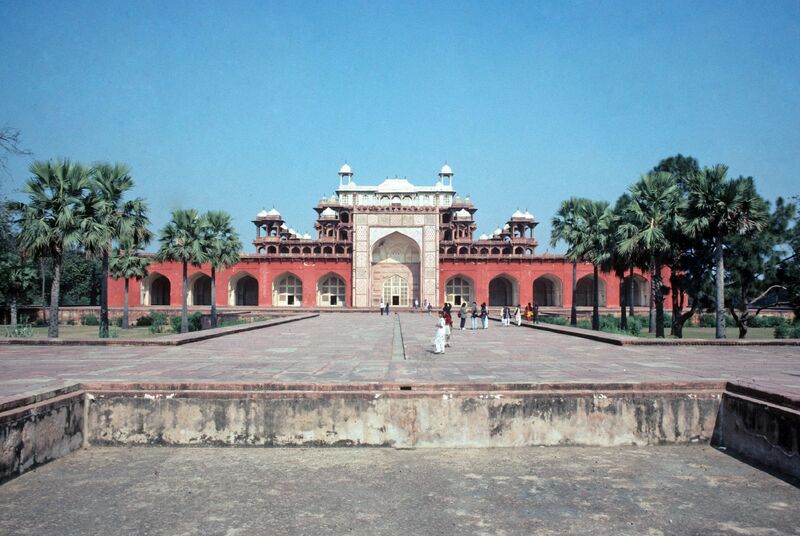Tomb of Akbar the Great
Item
- Title
- Tomb of Akbar the Great
- City
- Sikandra, Uttar Pradesh, India
- Address
- at Sikandra, suburb of Agra (8 km distant)
- Mathura road (NH2)
- Country
- India
- Date Created
- completed 1614 (creation)
- Century
- 17th century
- Classification
- Architecture and City Planning
- Style/Period
- Mughal
- Cultural Context
- Indian (South Asian)
- Islamic
- Materials
- white and colored marble
- red sandstone
- stucco
- paint
- Techniques
- construction (assembling)
- Description
- The Mughal emperor Akbar (reigned 1556-1605) selected Sikandra as the site for a garden, which was named Bihistabad (Persian, "Abode of Paradise"), and it was here that he was buried. Construction of his tomb may have been in progress when he died
- it was completed between 1612 and 1614 by his son, the emperor Jahangir (reigned 1605-1627). The contribution of each has been debated: the form of the building seems characteristic of Akbar’s reign, while some of the decoration is typical of Jahangir. The main tomb or mausoleum, square in plan, is built in five receding storeys. The unusual design is reminiscent of the so-called Panch Mahal at Fatehpur Sikri. The tomb and mausoleum was damaged in the 17th century by rebellious Jats. The complex is set in 48 Ha (119 acres) of grounds.
- Source
- Saif Haq
- Photographer
- Saif Haq
- Rights Holder
- © Saif Haq
- Access Rights
- Users must request permission from the copyright holder for all use in publications, including theses and dissertations.
“Tomb of Akbar the Great”, Saif Haq Collection, accessed July 26, 2025, https://exhibits.lib.ttu.edu/s/haq/item/14883


